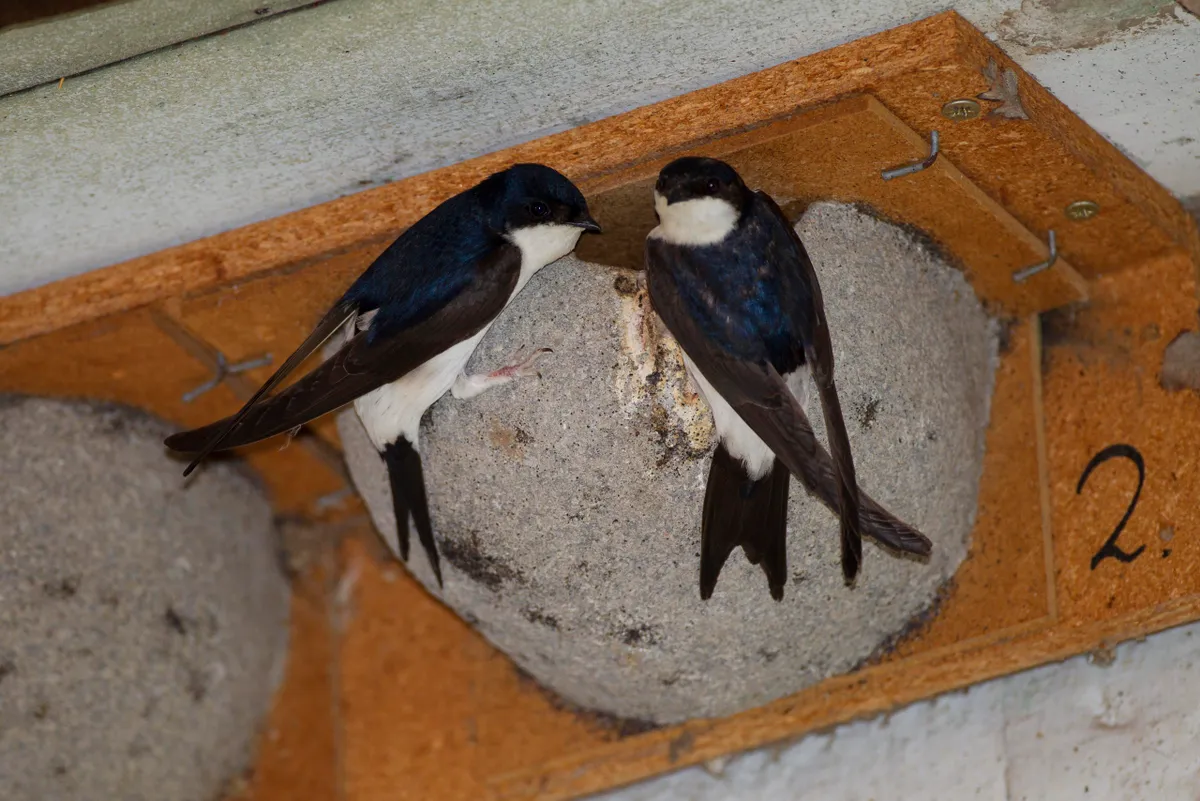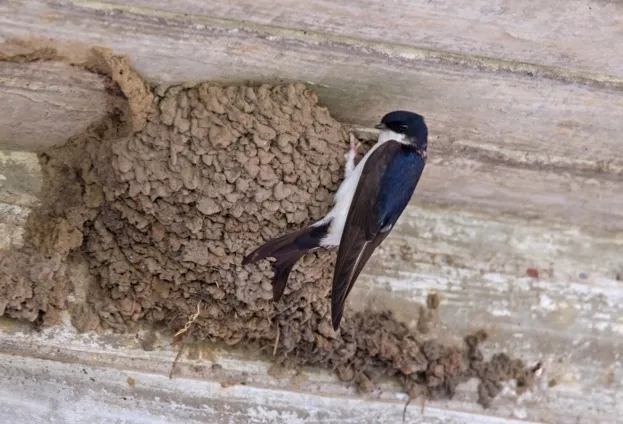House martins are one of the last of our summer migrants to depart in the autumn and some breeding pairs may still have young in the nest during September or even October.
The presence of young so late in the year can prompt the question as to their chances of survival. Assuming that the weather does not deteriorate suddenly, then the young should be able to make their way south, feeding on the wing as they go.
Learn more about house martins, including their migration routes where they go in winter, nesting habits and best places to see in the UK.
When do house martins arrive in the UK – and where have they been?
House martins tend to arrive back in the UK in late March and April, much to the delight of householders fortunate enough to have these iconic summer visitors breeding under their eaves.
The first individuals to return tend to be older birds and these quickly occupy those nests that have survived the vagaries of the winter weather.
Birds that arrive late at nesting colonies may be forced to build a new nest from scratch, a process that can take up to two weeks and involve more than 1000 beakfuls of mud.
What do house martins eat?
House martins only eat 'on the wing' by catching insects as they fly.

How do house martins protect their nest?
Despite being a colonial-nesting species, house martins can be surprisingly robust in defending their nest, seeing off rivals and having a go at house sparrows looking to use a nearly completed nest cup for their own breeding attempt.
You might imagine that house martins compete for aerial insects with swallows, swifts and sand martins. To some extent they do, but these species tend to feed on differently sized insects and at different heights, thereby reducing the degree of competition between them.
Information from monitoring schemes, such as the BTO/JNCC/RSPB Breeding Bird Survey, indicate a long-term decline in British house martin populations, something that has seen the species placed on the amber list of birds of conservation concern.
Interestingly, the decline has been most pronounced in South East England, with populations further north fairing rather better.
Where do house martins go when they migrate?
Somewhat surprisingly for a bird that is so familiar to us, we know virtually nothing about what happens to house martins once they leave our shores.
Recoveries of ringed birds from across France and on into North Africa reveal a migration route south but we have no idea what happens to these birds once they have crossed the Sahara.
In fact, there has only been one record of a ringed house martin from south of the Sahara, despite the many thousands of individuals to be fitted with rings in Britain each year (see map).
House martins are rarely seen in Africa during our winter, which might suggest that they remain on the wing and feed above the canopy of the equatorial rainforest, out of sight of human eyes.
New technologies may provide an answer, however.
The development of tiny tracking devices, known as geolocators, has revolutionised our understanding of how small birds migrate to and from Africa. These devices, no bigger than a shirt button, have an inbuilt electronic calendar, a clock and a light sensor that constantly monitors the daylight against the clock and the calendar and stores that information.
Once the bird returns to Britain, scientists can remove the device, download the data and work out where on the planet the geolocator was at any given time and date.
Does anything take over house martin nests?
Individual house martin nests may be used many times over, both for multiple breeding attempts within a breeding season or across years.
While both tawny owls and great spotted woodpeckers may break the nests open to get at the chicks within, only house sparrows regularly take over the abodes for their own use.
Since both species are colonial in habits, the proportion of nests occupied by house sparrows within a martin colony can be high, sometimes reaching 60 per cent. Of course, since house martin nests can last for several seasons, the house sparrows will occupy empty nests as well as forcibly evict the sitting tenants.

Such behaviour isn’t new, with naturalist Gilbert White noting the behaviour as early as 1774, when a greater number of house martins still used natural sites on cliff faces, rock clefts and tree cavities.
This Q&A originally appeared in BBC Wildlife Magazine, and was answered by Mike Toms.
The British Trust of Ornithology (BTO) works in partnership with over 40,000 volunteer birdwatchers to chart the fortunes of UK birds.
